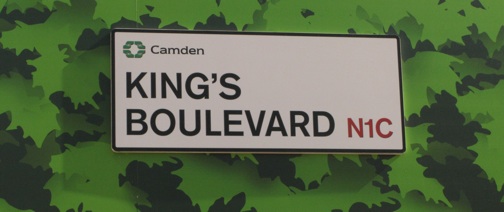A compelling narrative of ‘progress’ and ‘economic growth’ span around the regeneration of London’s poorer areas in 2012, writes Paul Coleman.
Regenerate. Modernise. Create new jobs. Demolish old homes and tired shopping parades. Build new apartments and gleaming retail centres (Olympic Park, Stratford Westfield). Fire up economic growth. Who could argue against regeneration?
A promise to regenerate Stratford, east London, was used to justify £9.3 billion of public funds spent on the 2012 London Olympic Games. Over £1bn was directly spent upgrading and extending rail and tube links ahead of the sporting festival.
But the Games raised high ‘legacy’ expectations of new jobs and decent affordable homes in an area of east London beset with high unemployment, low paid work, poor quality private housing and a lack of council homes. The regeneration legacy of the Olympic Park at Stratford became the biggest test for London’s regeneration model.
Success hinged on whether this model could genuinely reduce poverty and stem inequality. But it would be labelled a failure if it reproduced long-standing East London inequalities - and worse still, created new inequalities so close to the Olympic Stadium.
Regeneration model
London’s dominant regeneration model evolved from a neo-liberal paradigm born in the 1980s - retracted public spending, ‘trickle-down economics’, and the ‘marketisation’ of council or social housing,
Locally elected councillors from mainstream political parties competed with counterparts in other boroughs to attract ‘inward investment’ from property investors, developers and ‘anchor’ department stores.
Developers and asset managers convinced most local politicians that building large numbers of mono-tenure homes would be a disastrous return to the council estates built in the 1960s and 70s - and would require vast sums of taxpayers’ money not readily available.
But critics said large private developer-led regeneration schemes would not achieve profitable returns without large public subsidies in the form of cheap sales of public land, taxpayer-funded decanting of existing residents and demolition of their homes.
Up and coming
The regeneration model rested on an assumption - it can only be a ‘good thing’ if new homes attract ever-appreciating property prices and rising rents. Schemes tended to be on development sites within commuting distances of London’s ‘central activities zone’ - the City, West End and Canary Wharf. According to this assumption, wealth would trickle and even cascade into poorer areas.
Later, after several years with little evidence of wealth cascade or trickle-down, regenerated sites were deemed successful if new home values in regenerated ‘up and coming areas’ imitated central London’s booming prime residential market in Westminster and Kensington and Chelsea.
The Promise
London’s regeneration game kicked off with ‘the promise’. Working people on low and average incomes were assured development schemes would ‘deliver’ new homes, jobs and infrastructure and open spaces. (Elephant and Castle, Tottenham). Councillors said they would secure such ‘planning gains’ by invoking Section 106 of the Town & Country Planning Act 1990.
‘The regeneration promise’ arrived in some instances with ‘the denigration narrative’ - where an area and an entire local population were accorded a media-fuelled reputation for crime and dodgy lifestyles, even if that reputation falsified reality. Denigration greased the rails for regeneration.
‘The partnership’ followed. Enticed by appointed local council officers, developers were formally invited by locally elected politicians to become ‘development partners’ with the local authority. (Tottenham, Elephant and Castle).
“Public consultation’ on the actual proposals came next, quickly followed sometimes by an alluring ‘right to return’ to the new development for existing residents and traders. But this right could often expire well before new buildings were completed.
Viability
During ‘consultation’, social rented or council housing was quickly ruled out as financially ‘non-viable’. Developers contended financial viability – their need to return profits on a scheme – dictated only a smaller number of ‘affordable’ properties could be made available to existing local people.
Developers often complained a lack of available private lending and public funding meant regeneration developments suffered from reduced profitable viability. More private housing had to be sold to justify the building of a decreasing amount of ‘affordable’ homes.
Appointed officials advised elected politicians that commercially confidential viability tests were accurate and fair. Local politicians agreed to whittle down the percentage of demanded affordable housing. Section 106 gains became modified, blunted or even dropped completely. Local residents discovered they could not practically afford the smaller proportion of properties now offered as ‘affordable housing’, even on a part-buy, part-rent basis.




